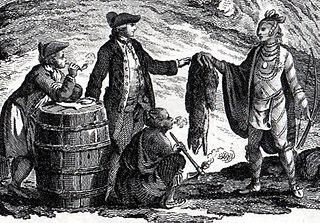Related Research Articles

The United States Department of Health and Human Services (HHS) is a cabinet-level executive branch department of the U.S. federal government created to protect the health of all Americans and providing essential human services. Its motto is "Improving the health, safety, and well-being of America". Before the separate federal Department of Education was created in 1979, it was called the Department of Health, Education, and Welfare (HEW).

Substance abuse, also known as drug abuse, is the use of a drug in amounts or by methods which are harmful to the individual or others. It is a form of substance-related disorder. Differing definitions of drug abuse are used in public health, medical and criminal justice contexts. In some cases, criminal or anti-social behaviour occurs when the person is under the influence of a drug, and long-term personality changes in individuals may also occur. In addition to possible physical, social, and psychological harm, the use of some drugs may also lead to criminal penalties, although these vary widely depending on the local jurisdiction.
The Substance Abuse and Mental Health Services Administration is a branch of the U.S. Department of Health and Human Services. It is charged with improving the quality and availability of treatment and rehabilitative services in order to reduce illness, death, disability, and the cost to society resulting from substance abuse and mental illnesses. The Administrator of SAMHSA reports directly to the Secretary of the U.S. Department of Health and Human Services. SAMHSA's headquarters building is located outside of Rockville, Maryland.
Drug rehabilitation is the process of medical or psychotherapeutic treatment for dependency on psychoactive substances such as alcohol, prescription drugs, and street drugs such as cannabis, cocaine, heroin or amphetamines. The general intent is to enable the patient to confront substance dependence, if present, and stop substance misuse to avoid the psychological, legal, financial, social, and physical consequences that can be caused.
The National Institute of Mental Health (NIMH) is one of 27 institutes and centers that make up the National Institutes of Health (NIH). The NIH, in turn, is an agency of the United States Department of Health and Human Services and is the primary agency of the United States government responsible for biomedical and health-related research.

The National Institute on Alcohol Abuse and Alcoholism (NIAAA), as part of the U.S. National Institutes of Health, supports and conducts biomedical and behavioural research on the causes, consequences, treatment, and prevention of alcoholism and alcohol-related problems. The NIAAA functions both as a funding agency that supports research by external research institutions and as a research institution itself, where alcohol research is carried out in‐house. It funds approximately 90% of all such research in the United States. The NIAAA publishes the academic journal Alcohol Research: Current Reviews.
An employee assistance program (EAP) is an employee benefit program that assists employees with personal problems and/or work-related problems that may impact their job performance, health, mental and emotional well-being. EAPs generally offer free and confidential assessments, short-term counseling, referrals, and follow-up services for employees. EAP counselors may also work in a consultative role with managers and supervisors to address employee and organizational challenges and needs. Many corporations, academic institution and/or government agencies are active in helping organizations prevent and cope with workplace violence, trauma, and other emergency response situations. There is a variety of support programs offered for employees. Even though EAPs are mainly aimed at work-related issues, there are a variety of programs that can assist with problems outside of the workplace. EAPs have grown in popularity over the years, and are more desirable economically and socially.
Alcohol education is the practice of disseminating information about the effects of alcohol on health, as well as society and the family unit. It was introduced into the public schools by temperance organizations such as the Woman's Christian Temperance Union in the late 19th century. Initially, alcohol education focused on how the consumption of alcoholic beverages affected society, as well as the family unit. In the 1930s, this came to also incorporate education pertaining to alcohol's effects on health. For example, even light and moderate alcohol consumption increases cancer risk in individuals. Organizations such as the National Institute on Alcohol Abuse and Alcoholism in the United States were founded to promulgate alcohol education alongside those of the temperance movement, such as the American Council on Alcohol Problems.
Title 42 of the United States Code is the United States Code dealing with public health, social welfare, and civil rights.
Reclaiming Futures is a non-profit organization aimed at assisting teenagers out of trouble with drugs, alcohol and crime. It began in 2001 with $21 million from The Robert Wood Johnson Foundation. As of 2010 it operates with funding from the Robert Wood Johnson Foundation, the U.S. Office of Juvenile Justice and Delinquency Prevention (OJJDP), the Center for Substance Abuse Treatment and the Kate B. Reynolds Charitable Trust. As of 2010 the group is based at the Regional Research Institute for Human Services of the Graduate School of Social Work at Portland State University in the United States, and operates in 26 communities across the U.S.

Substance abuse prevention, also known as drug abuse prevention, is a process that attempts to prevent the onset of substance use or limit the development of problems associated with using psychoactive substances. Prevention efforts may focus on the individual or their surroundings. A concept that is known as "environmental prevention" focuses on changing community conditions or policies so that the availability of substances is reduced as well as the demand. Individual Substance Abuse Prevention, also known as drug abuse prevention involves numerous amounts of different sessions depending on the individual to help cease or reduce the use of substances. The time period to help a specific individual can vary based upon many aspects of an individual. The type of Prevention efforts should be based upon the individual's necessities which can also vary. Substance use prevention efforts typically focus on minors and young adults – especially between 12–35 years of age. Substances typically targeted by preventive efforts include alcohol, tobacco, marijuana, inhalants, coke, methamphetamine, steroids, club drugs, and opioids. Community advocacy against substance use is imperative due to the significant increase in opioid overdoses in the United States alone. It has been estimated that about one hundred and thirty individuals continue to lose their lives daily due to opioid overdoses alone.

The Second Chance Act of 2007, titled "To reauthorize the grant program for reentry of offenders into the community in the Omnibus Crime Control and Safe Streets Act of 1968, to improve reentry planning and implementation, and for other purposes," was submitted to the House by Representative Danny Davis (D-IL) to amend the Omnibus Crime Control and Safe Streets Act of 1968 to reauthorize, rewrite, and expand provisions for adult and juvenile offender state and local reentry demonstration projects to provide expanded services to offenders and their families for reentry into society. H.R. 1593 was signed into law April 9, 2008.
The California Department of Alcohol and Drug Programs (ADP) was a California state agency concerned with substance abuse prevention and treatment. Created by the California Legislature in 1978, ADP brought together the Governor's Office of Alcoholism and the California Department of Health's Division of Substance Abuse to form the single state authority for substance abuse prevention and treatment, and is currently within the auspices of the California Health and Human Services Agency. In this capacity, ADP provided leadership and policy coordination for the planning, development, implementation, and evaluation of a comprehensive statewide system of alcohol and other drug (AOD) prevention, treatment and recovery services. As of July 1, 2013, functions of ADP were transferred to the Department of Health Care Services.
National Families in Action was a non-profit organization that was founded in Atlanta, Georgia in 1977. Its mission is to help children succeed by empowering parents to create an academic and social environment where children thrive and are protected from substance abuse and other high-risk behaviors. In November 2021, marking 45 years, the organization announced it would cease operations in January 2022.

The New York State Department of Mental Hygiene is a department of the New York state government composed of three autonomous offices:

Some Native Americans in the United States have had difficulty with the use of alcohol. Among contemporary Native Americans and Alaska Natives, 11.7% of all deaths are related to alcohol. By comparison, about 5.9% of global deaths are attributable to alcohol consumption. Because of negative stereotypes and biases based on race and social class, generalizations and myths abound around the topic of Native American alcohol misuse.

The 21st Century Cures Act is a United States law enacted by the 114th United States Congress in December 2016 and then signed into law on December 13, 2016. It authorized $6.3 billion in funding, mostly for the National Institutes of Health. The act was supported especially by large pharmaceutical manufacturers and was opposed especially by some consumer organizations.
A managed alcohol program is a program meant to reduce harm for chronic alcoholics. The program involves providing a regular dose of alcohol to individuals with alcohol addiction, typically at a shelter-based harm reduction centre.
Discrimination against drug addicts is a form of discrimination against people who suffer from a drug addiction.
References
- ↑ "National Institute on Alcohol Abuse and Alcoholism (NIAAA): Legislative Chronology". National Institutes of Health. U.S. Department of Health and Human Services. March 17, 2016.
- ↑ Burwell, Brian O.; Preston, Bonnie; Bailey, Sarah; Mathematica Policy Research, Inc. (January 1990). "Alcohol, Drug Abuse and Mental Health Services Block Grant". Federal Programs for Persons with Disabilities. U.S. Department of Health and Human Services.
{{cite book}}:|author4=has generic name (help) - ↑ Institute of Medicine; Committee on Treatment of Alcohol Problems (1990). "Who Pays for Treatment?". Broadening the Base of Treatment for Alcohol Problems . Washington, DC: National Academies Press. doi:10.17226/1341. ISBN 978-0-309-04038-9. PMID 25032399.
- ↑ 21st Century Cures Act §§ 8001 et seq.